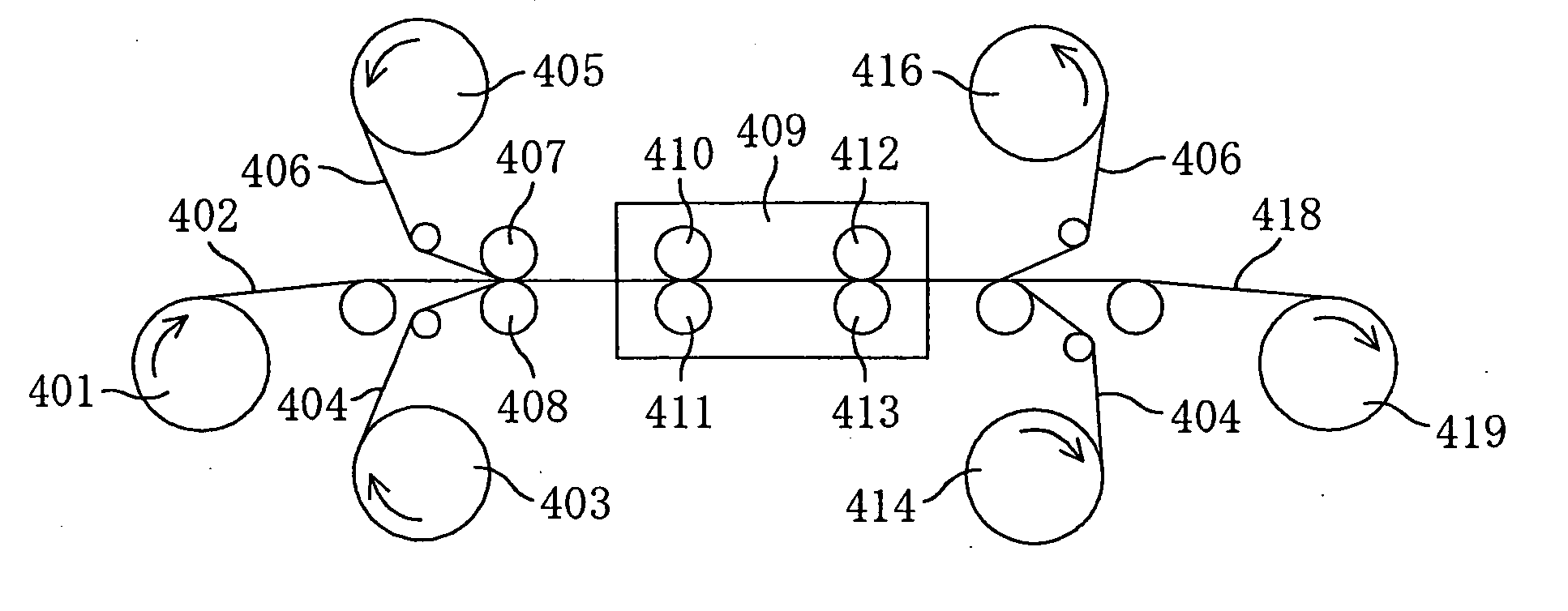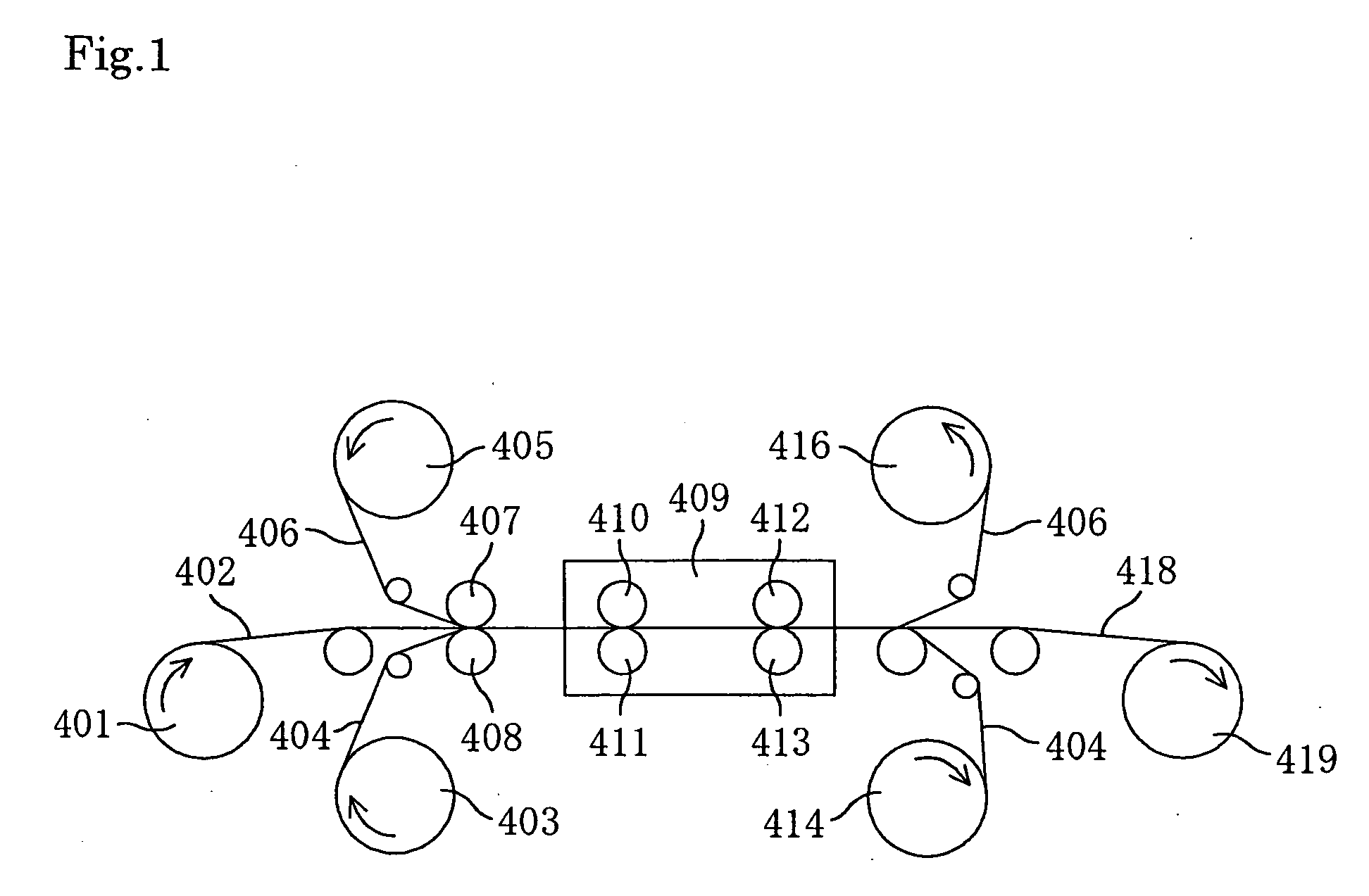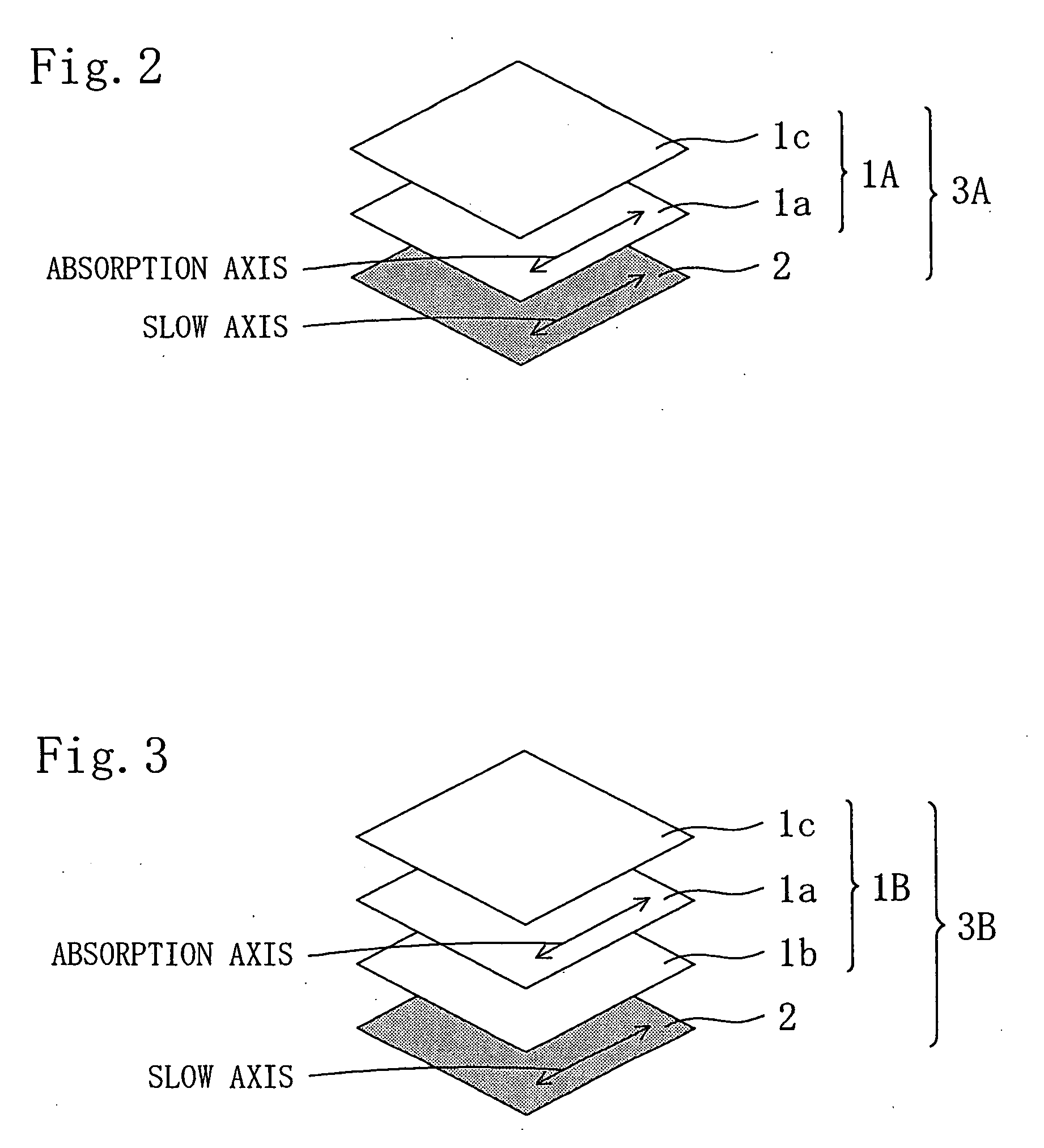Retardation film and method of producing the same, and optical film, liquid crystal panel, and liquid crystal display apparatus all using the retardation film
a retardation film and film technology, applied in the direction of optical film, transportation and packaging, instruments, etc., can solve the problems of aromatic polymer film degrading display properties, uneven retardation values, and large photoelastic coefficient of aromatic polymer film,
- Summary
- Abstract
- Description
- Claims
- Application Information
AI Technical Summary
Benefits of technology
Problems solved by technology
Method used
Image
Examples
example 1
[0204] A polycarbonate-based resin having a weight average molecular weight (Mw) of 60,000 and containing repeating units represented by the following formulae (3) and (4) (number average molecular weight (Mn) of 33,000, Mw / Mn of 1.78, weight ratio (A): (B) of 4:6) was obtained through a conventional method by using phosgene as a carbonate precursor, and (A) 2,2-bis (4-hydroxyphenyl)propane and (B) 1,1-bis(4-hydroxyphenyl)-3,3,5-trimethylcyclohexane as aromatic dihydric phenol components. 70 parts by weight of the polycarbonate-based resin and 30 parts by weight of a styrene-based resin (HIMER SB75, available from Sanyo Chemical Industries, Ltd.) having a weight average molecular weight (Mw) of 1,300 (number average molecular weight (Mn) of 716, Mw / Mn of 1.78) were added into 300 parts by weight of dichloromethane. The whole was mixed under stirring at room temperature for 4 hours, to thereby prepare a clear solution. The solution was cast on a glass plate and left standing at room ...
example 2
[0210] A retardation film was produced in the same manner as in Example 1 except that the stretching temperature was changed from 147° C. to 146° C., and the stretch ratio was changed from 1.29 times to 1.09 times. Table 2 shows the properties of the obtained retardation film.
example 3
[0211] A retardation film was produced in the same manner as in Example 1 except that the stretching temperature was changed from 147° C. to 141° C., and the stretch ratio was changed from 1.29 times to 1.10 times. Table 2 shows the properties of the obtained retardation film.
PUM
| Property | Measurement | Unit |
|---|---|---|
| thickness direction retardation | aaaaa | aaaaa |
| shrinkage ratio | aaaaa | aaaaa |
| shrinkage ratio | aaaaa | aaaaa |
Abstract
Description
Claims
Application Information
 Login to View More
Login to View More - R&D
- Intellectual Property
- Life Sciences
- Materials
- Tech Scout
- Unparalleled Data Quality
- Higher Quality Content
- 60% Fewer Hallucinations
Browse by: Latest US Patents, China's latest patents, Technical Efficacy Thesaurus, Application Domain, Technology Topic, Popular Technical Reports.
© 2025 PatSnap. All rights reserved.Legal|Privacy policy|Modern Slavery Act Transparency Statement|Sitemap|About US| Contact US: help@patsnap.com



